Once covered in verdant, dense jungle, today Sierra Leone’s forests are dwindling. Per Global Forest Watch, over 35% of the country’s forest cover has vanished since 2000, and over 400 square kilometers has been clear cut in the last year alone. Like the forests of its neighbors in West and Central Africa, Sierra Leone’s forests are shrinking, and with them the populations of endemic animals that call these forests home, including chimpanzees, our closest evolutionary relatives.
In the 1970s, there were around 20,000 critically endangered western chimpanzees in Sierra Leone. By 2008 only 5,500 were left. Some were pushed out of their natural habitats to make way for agriculture, logging and the development of roads and other infrastructure.
Others fell victim to hunters or were trafficked as illegal pets. Human population in Sierra Leone has nearly doubled since the turn of the century (from 4.5 million in 2000 up to nearly 9 million in 2023). This has gone hand in hand with the rise in both the bushmeat trade and the pet trade. Chimpanzees are expensive pieces of meat on the black market, and babies that are too small to eat are often kept and sold as pets, both to locals and in foreign markets.
In the midst of this gloom, Tacugama Chimpanzee Sanctuary has become a lifeline for these threatened animals, and is working hard to save both chimpanzees and their natural habitat.
Inland from the capital city Freetown, the Western Area Peninsula National Park is a narrow chain of hills (37 km long, 14 km wide), occupying the heart of the Freetown peninsula. The Pristine rainforest, mountainous terrain, and idyllic waterfalls characterize the landscape. This biodiversity hotspot is home to the Tacugama Chimpanzee Sanctuary.
Despite its beauty and importance though, the park, like forests elsewhere in the country, is under threat. Once almost 180 square kilometers, satellite imagery analysis shows that Western Area Peninsula has lost a quarter of its forest since 2016, and as the forest shrinks, the number of orphaned chimps at Tacugama expands.
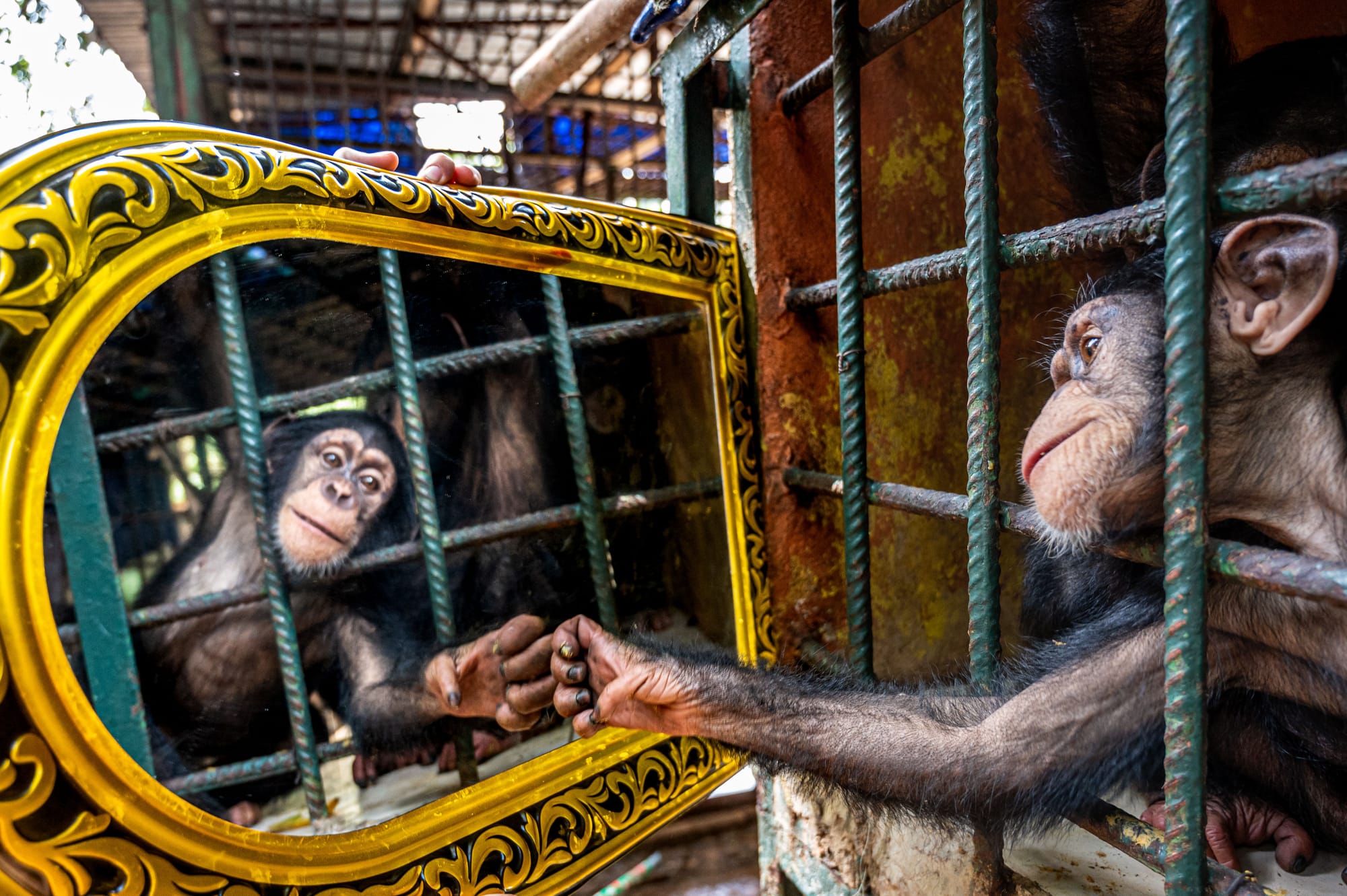
The Birth of a Chimp Haven
Let’s rewind 36 years. It’s 1988, and Bala and Sharmila Amarasekaran are driving through the Sierra Leonean countryside, around 250 kilometers from Freetown. Passing through a village, they see an emaciated orphaned chimpanzee, tied to a tree and being kept as a pet.
They feel they have no choice. “From that first moment of the chimp gazing up at us and hugging us, my wife and I were really moved,” Bala said. “We knew if we left this little guy behind, he would die.”
They paid $20 for the chimpanzee, and named him Bruno. What started as a one off mercy mission soon expanded. One chimp soon became seven, all housed in a makeshift shelter in the garden of the Amarasekaran’s Freetown home. In dire need of space, the couple campaigned for six years to be allowed to set up a reserve within the Western Area Peninsula National Park.
In 1995 the Tacugama Chimpanzee Sanctuary was born.
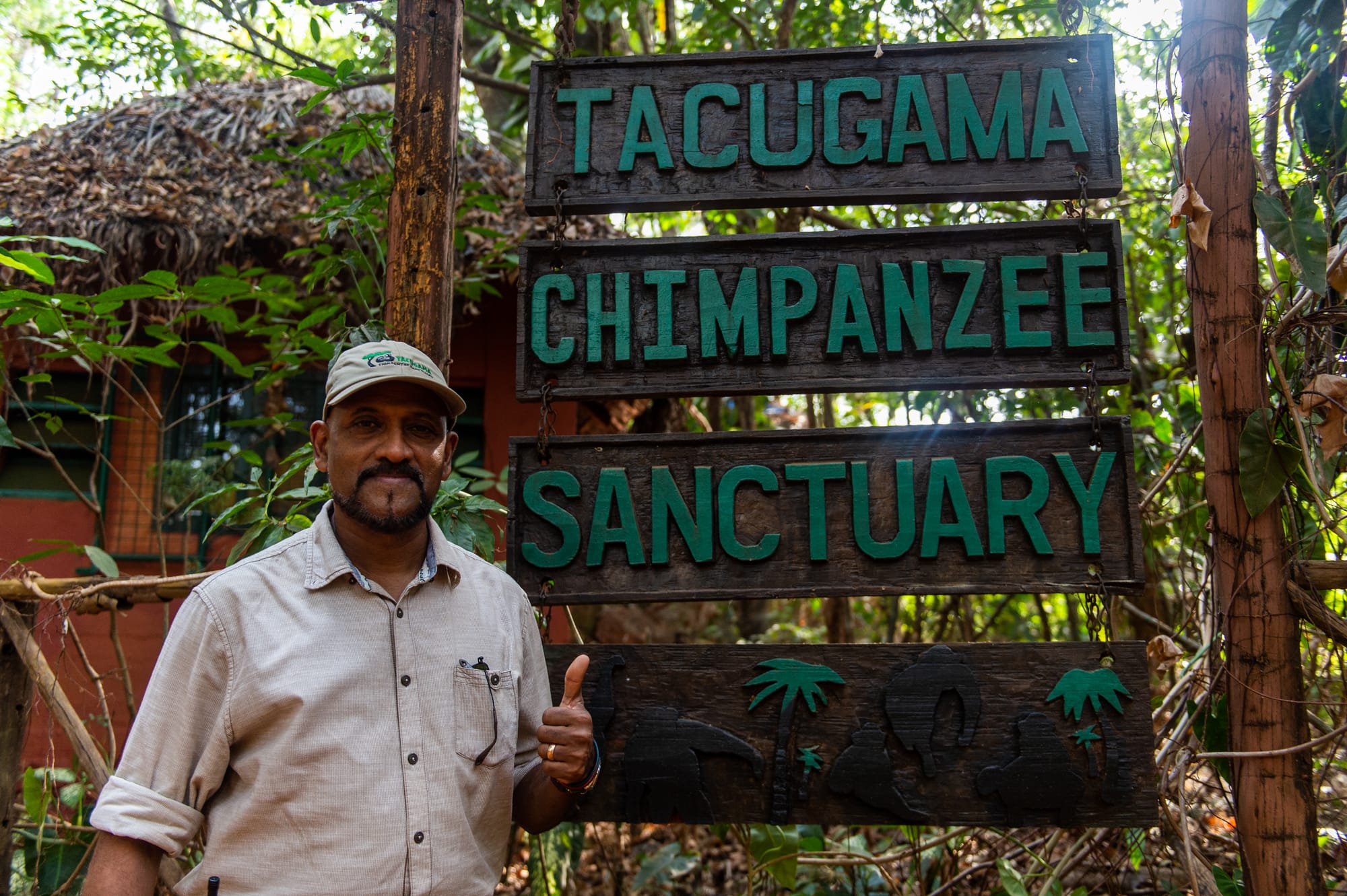
As news of the sanctuary spread, so did reports of more captive chimps in Freetown. Some were surrendered to the sanctuary, while others were confiscated under the provisions of the nation’s Wildlife Conservation Act (1972).
For the next two years, chimps continued to be rescued from desperate situations. By 1997, there were two-dozen chimps at the sanctuary. Some bore the physical scars of bush snares or mistreatment, with missing hands or gnarled scars from deep lacerations—lasting reminders of their nightmarish pasts. Others had mental scars from growing up without mothers, or displayed a deep mistrust of humans. Tacugama became a haven for these chimpanzees, providing them with a second chance and a life of peace and security.
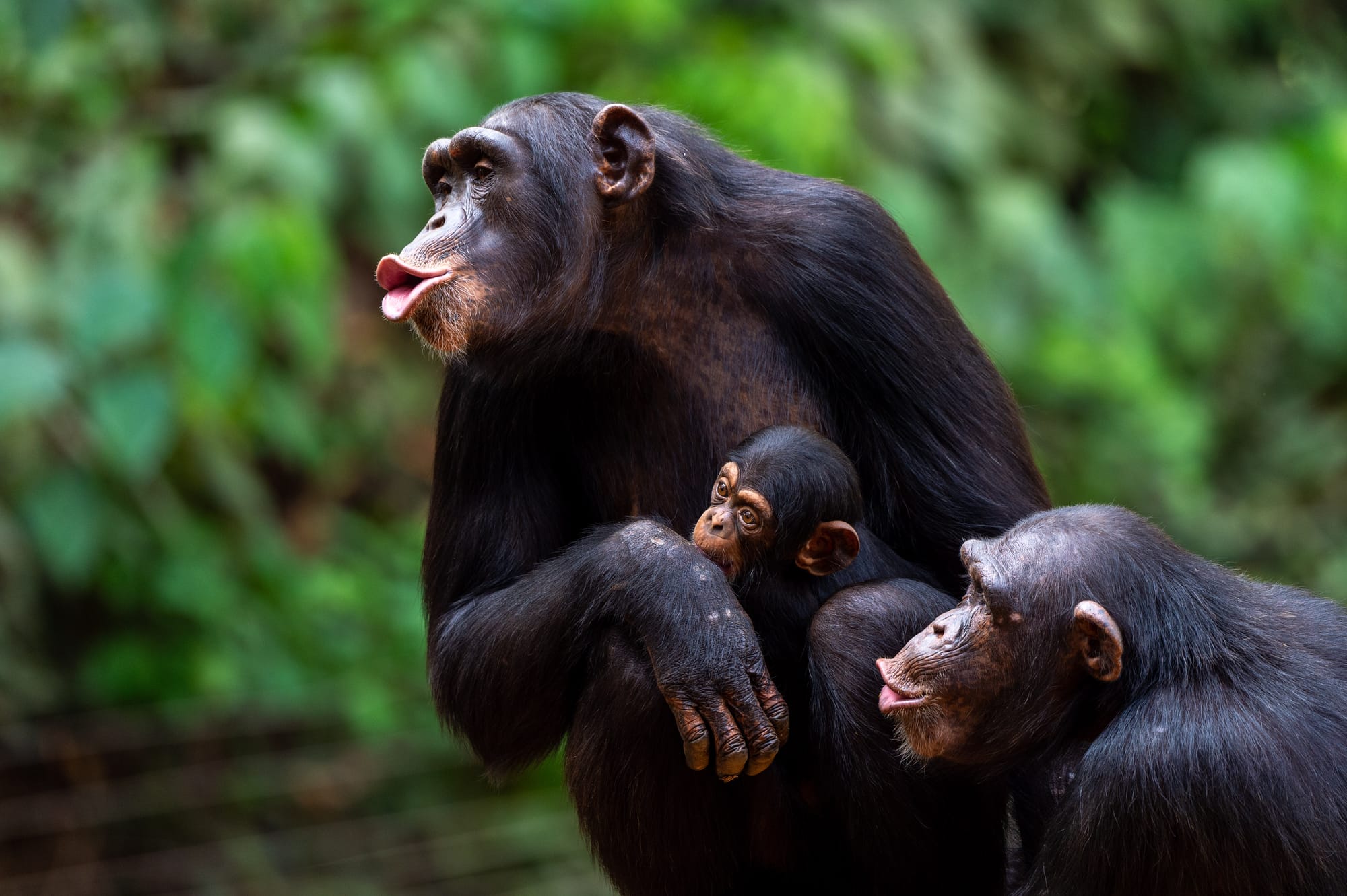
Along the way, Bala Amarasekaran has become somewhat of a legend in Sierra Leone, managing Tacugama through the country’s brutal 11-year civil war and subsequent military coups, as well as devastating outbreaks of ebola and (more recently) COVID-19. All the while, his work at Tacugama continued to push chimps into the national consciousness. He also spent years lobbying for chimpanzees to become the nation’s national animal. It was finally declared so in 2019, shortly after primatologist Jane Goodall visited the sanctuary.
It was a miraculous win for Tacugama. “This is great for us,” said Aram Kazandjian, Tacugama’s development manager. “The government prioritizes chimp protection. Being the national animal, this means it’s prohibited to kill, sell, eat and keep [chimps] at home.”
“We have a moral obligation to protect chimpanzees,” Kazandjian continued. “They share 98.6% of our DNA.”
But it’s far from the end of the battle. “It took us 25 years to get them declared the national animal,” added Amarasekaran. “Now it’s about taking pride in that, and seeing how we can carry this legacy forward and protect the species.”
Protecting Chimps Today, Protecting Chimps Tomorrow
As well as providing lifelong care for its 119 chimpanzee residents—most, if not all, of whom are orphans and rescues from the illicit bushmeat and pet trades—Tacugama’s work continues to change and expand.
Beyond housing, feeding and rehabilitating orphaned chimpanzees, Tacugama supports ecotourism and other projects in rural areas, efforts that are designed to help protect wild chimpanzees so they don’t end up at the sanctuary in the first place.
Getting local communities to buy into chimpanzee protection takes patience and an understanding of the economic pressures they face. For people who are struggling to feed their families and send their kids to school, conservation often seems a luxury they can’t afford.
Despite Tacugama’s many successes, forest felling and bushmeat hunting remain great threats. A recent arrival at the nursery—which currently has 39 infants—was found near the park with gunshot wounds in the head and chest. He was likely hit by stray bullets aimed at his mother. “We’re taking in rescues at an alarming rate, despite all our efforts. In 2022, we rescued ten chimpanzees, and all are babies,” reported Kazandjian.
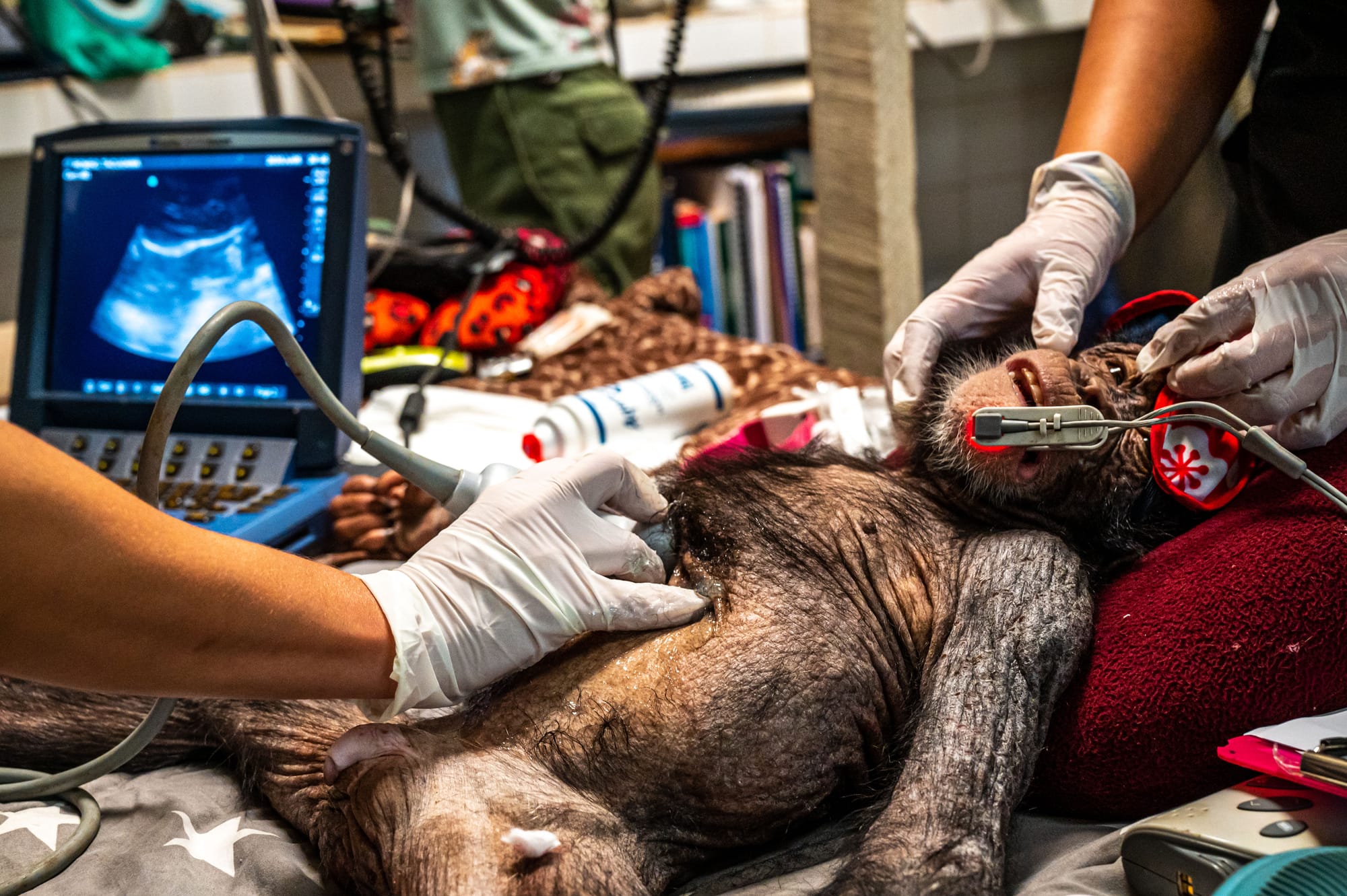
In total, Tacugama has rescued and rehabilitated around 200 western chimpanzees since their inception three decades ago. Sadly, these rescued chimps are also a symbol of the devastation the species still faces. “Scientists have proven that every time you have a chimp landing in a sanctuary, probably 8 to 10 will have died in the wild,” said Amarasekaran. “If you look at the 119 or so chimps here now, they probably represent 1,000 that died.”
Tacugama has been so successful at what they do that they’ve been asked by the Sierra Leonean government to collaborate and help manage two additional national parks, adding Outamba-Kilimi National Park and Loma Mountains National Park to their portfolio.
So far, as part of their chimpanzee outreach and collaboration endeavors, 80,000 trees have been planted in Moyamba, in the south of the country. These new trees have helped to connect five patches of fragmented forest, creating the country’s first wildlife corridor and restoring the natural habitat for wild chimps.
An additional 70,000 trees have been planted in a degraded area of Loma Mountains, with 90,000 cash crops (cashew, coffee and cocoa) being planted in the buffer areas of the park this year to provide income for the local communities. 2024 will also see 90,000 trees being planted in Outamba-Kilimi.
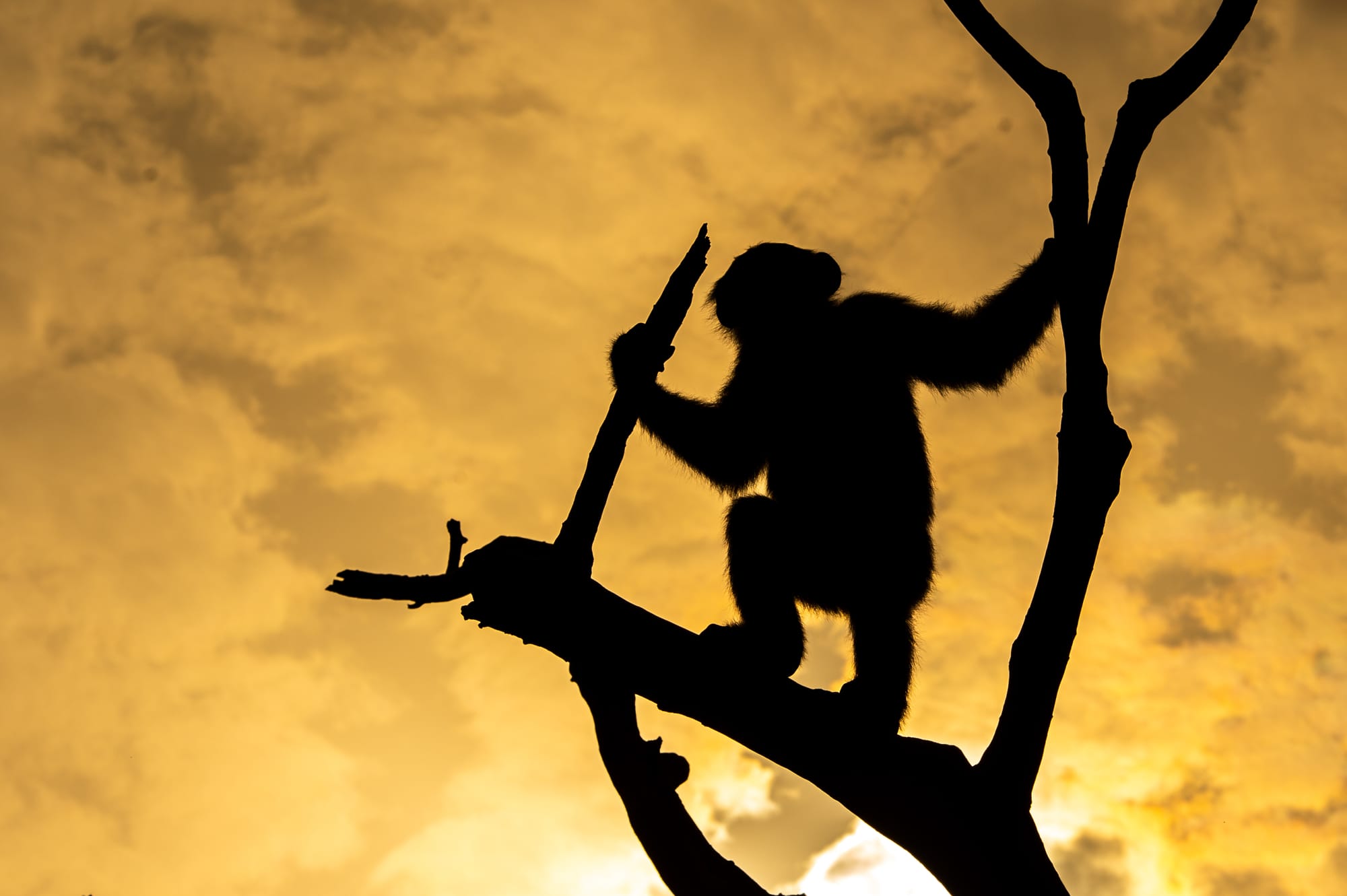
Part shelter, part educational facility, and part tourist attraction, Tacugama Chimpanzee Sanctuary attracts visitors from across the world. A 30-minute drive from Freetown, the passionate and committed staff offer twice-daily tours of the sanctuary, during which visitors can observe the work of the nursery or get a glimpse of older chimps in the sanctuary’s larger forested enclosures. Tacugama also has several eco-lodges, where visitors can spend the night.
The developing nation of Sierra Leone has a long list of urgent needs, of course, and caring for young chimpanzees isn’t always seen as a priority. But these remarkably intelligent primates are our closest living relative, sharing nearly 99% of our DNA. They can learn human sign language, use tools, and have incredible problem-solving abilities.
While the odds have seemed overwhelming at times, for nearly 30 years the small, committed team at Tacugama Chimpanzee Sanctuary has been advocating for our chimpanzee cousins. In a fitting serendipity, a picture of Bala and Sharmila’s first rescue chimp, Bruno, is now on Sierra Leone’s national passport.
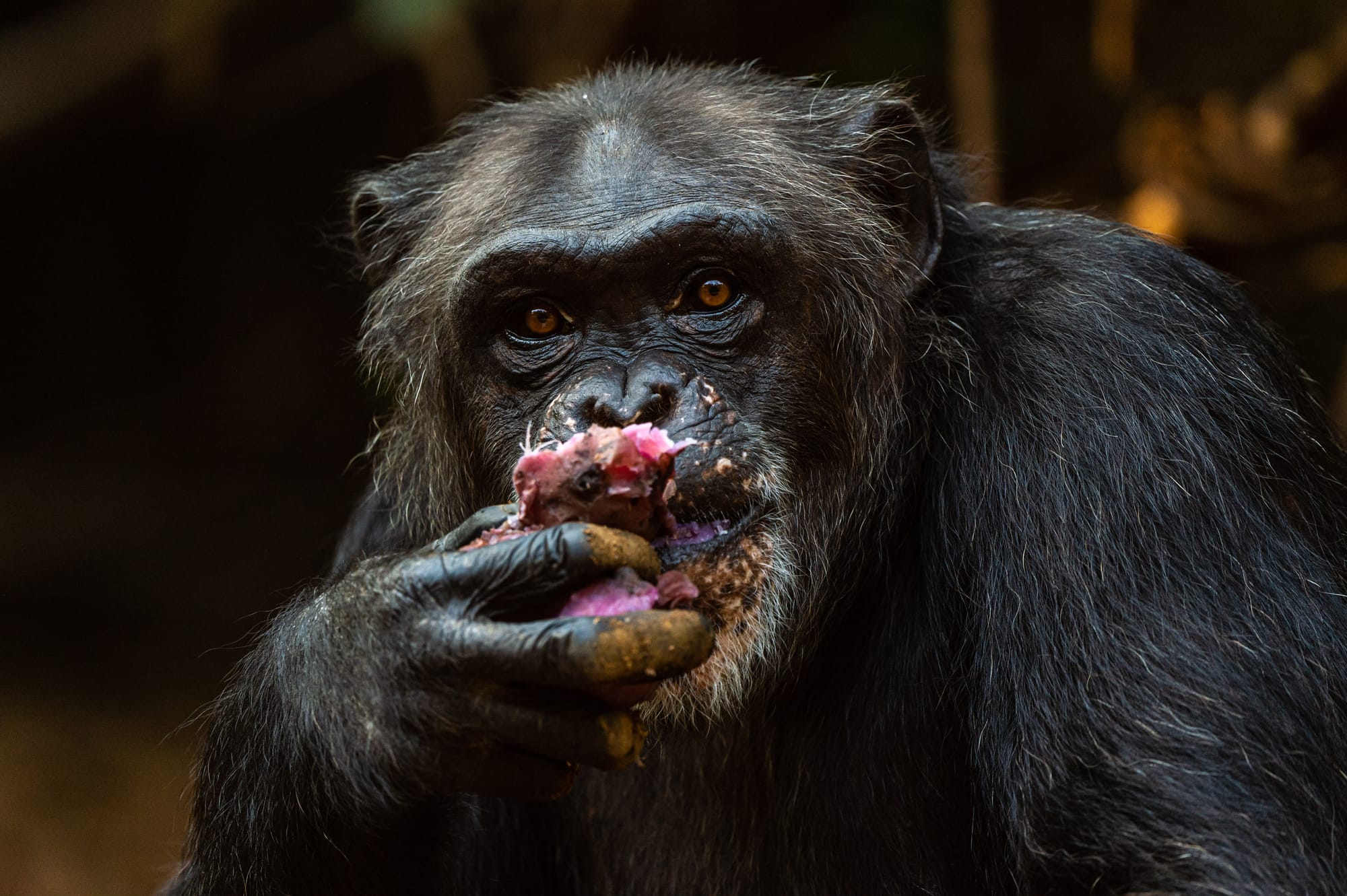
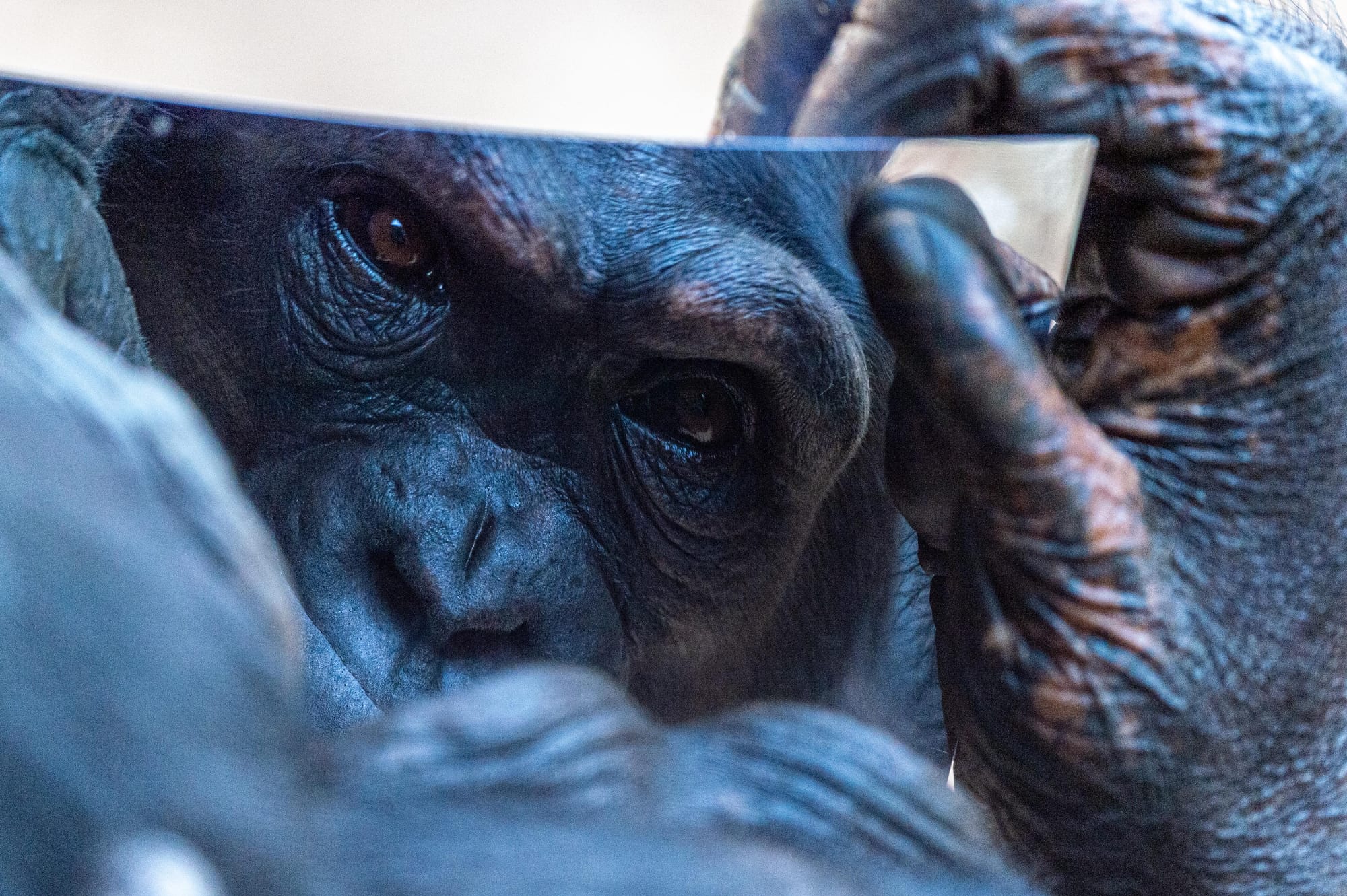
CREDIT: Tacugama Chimpanzee Sanctuary
